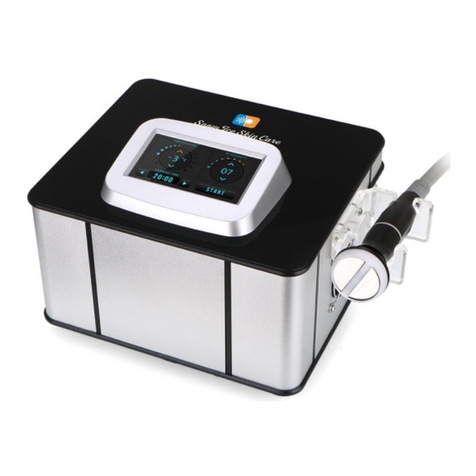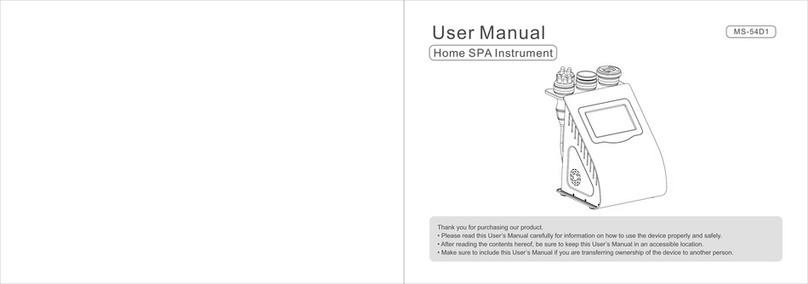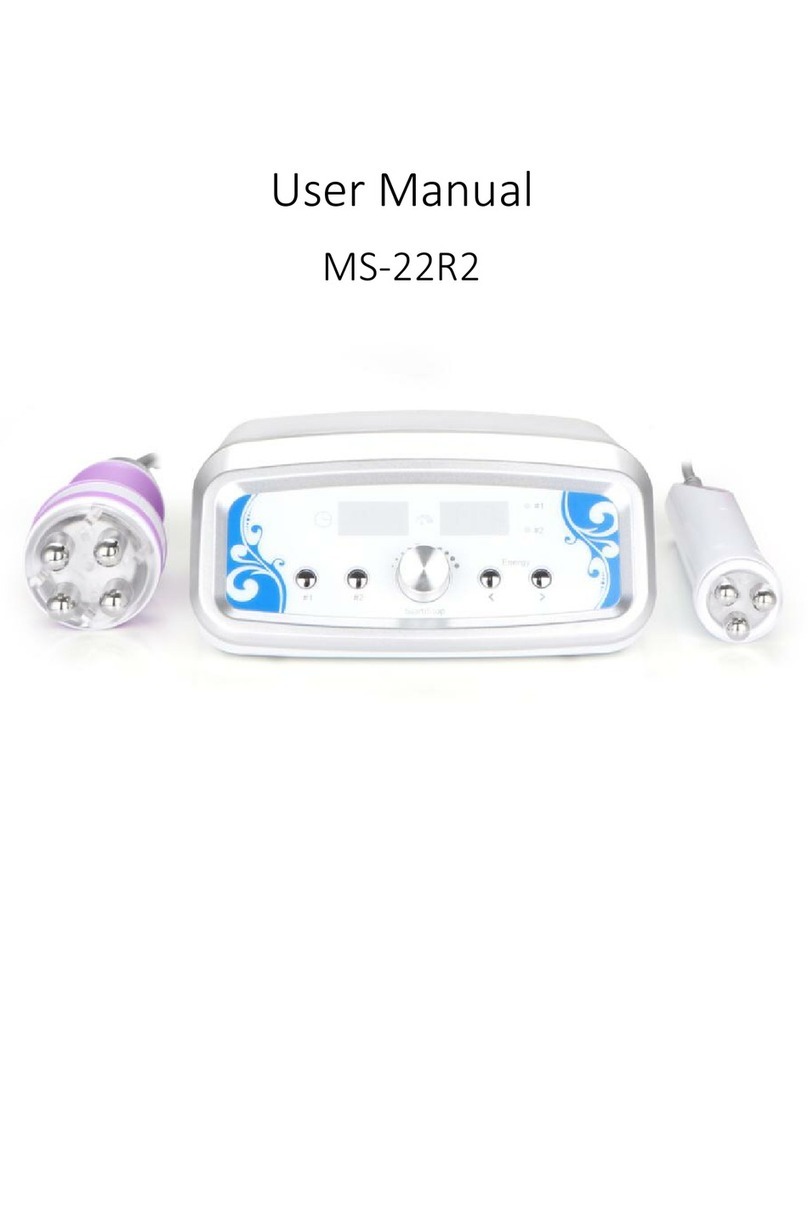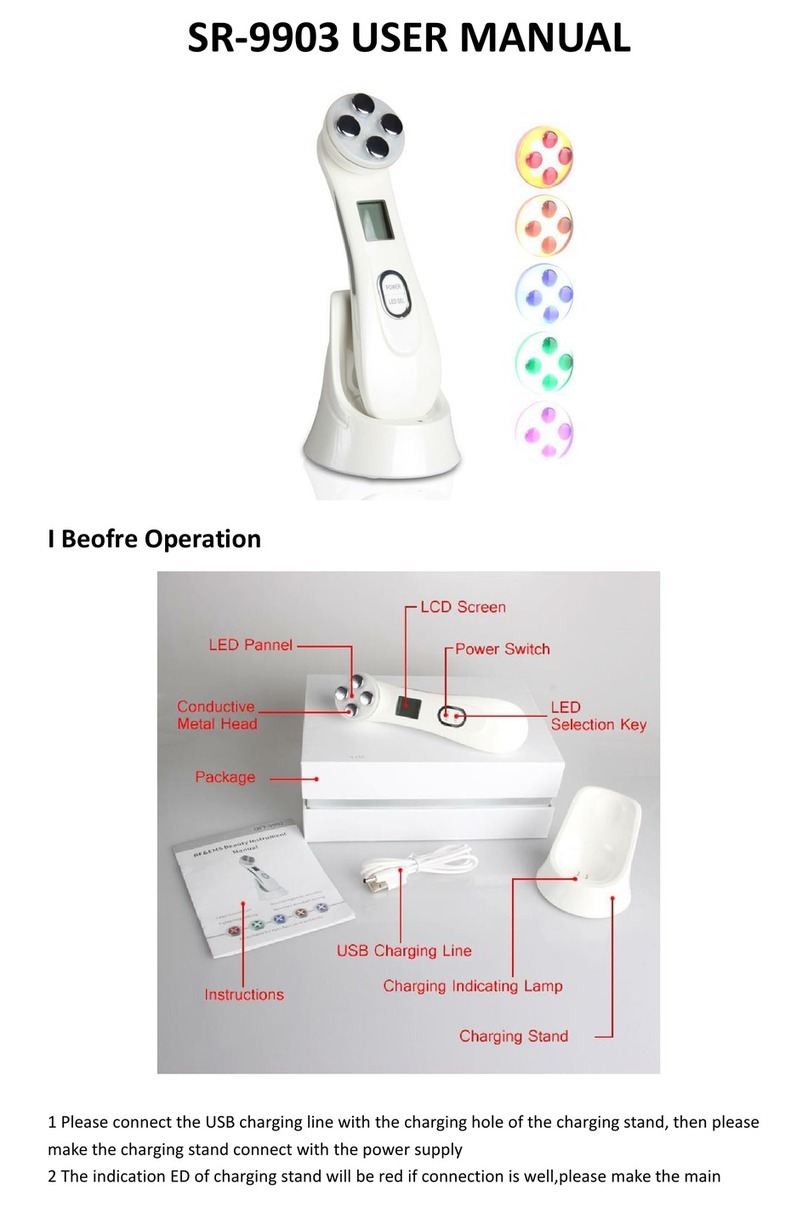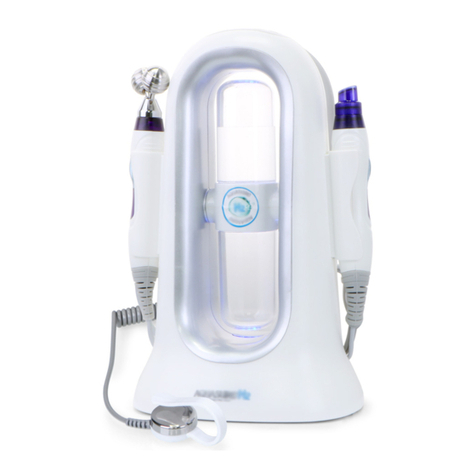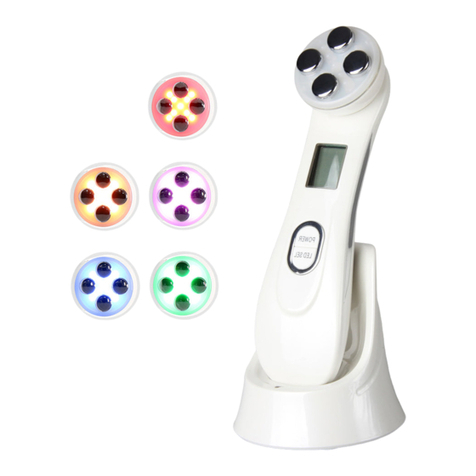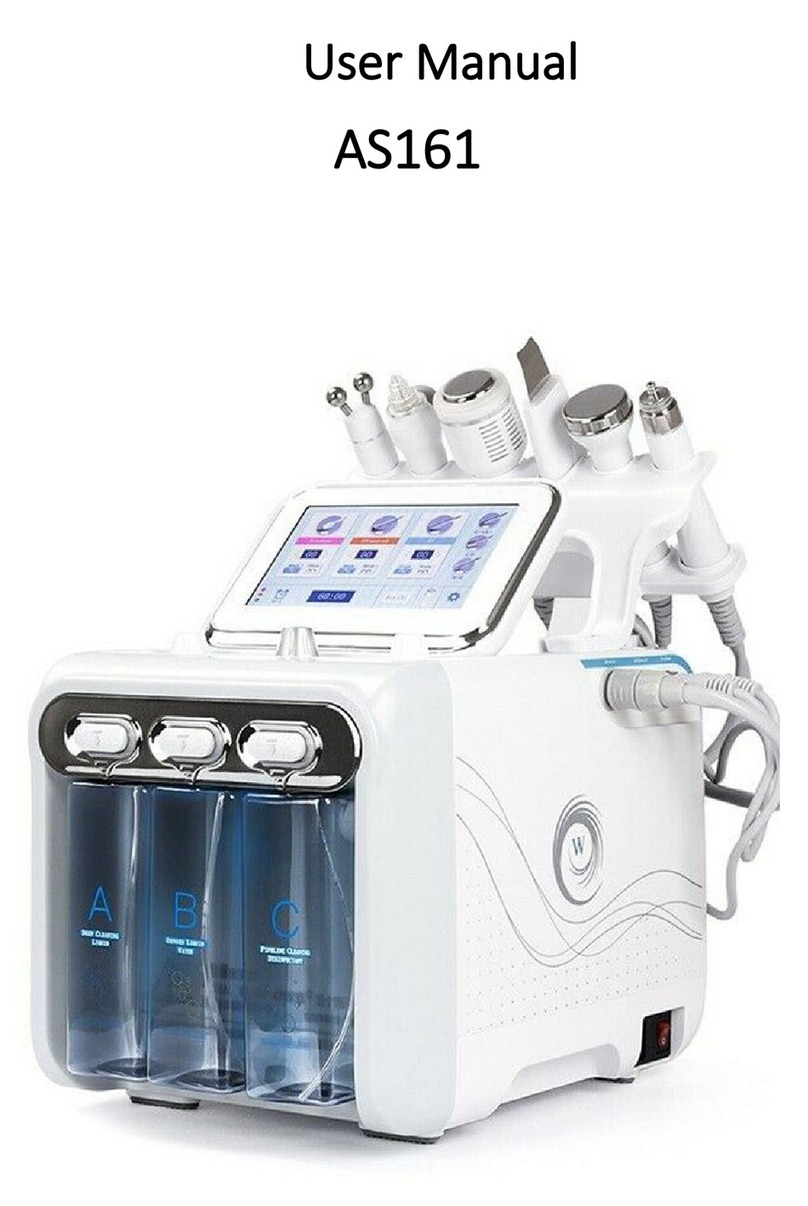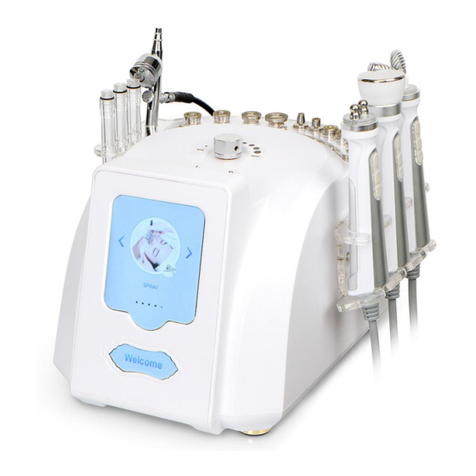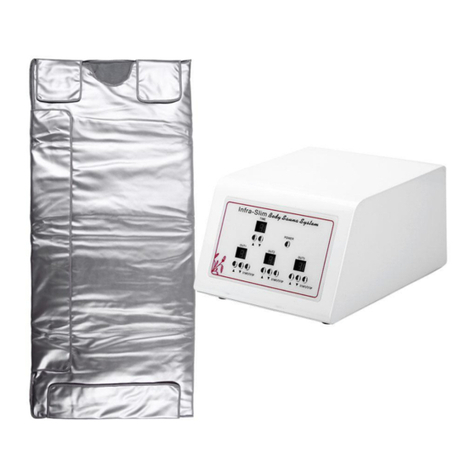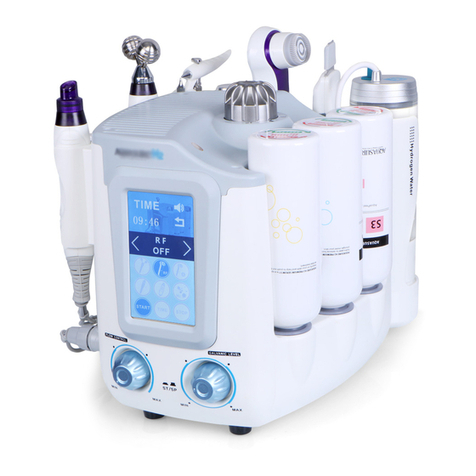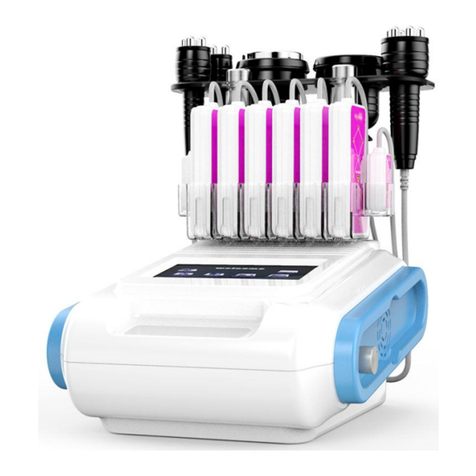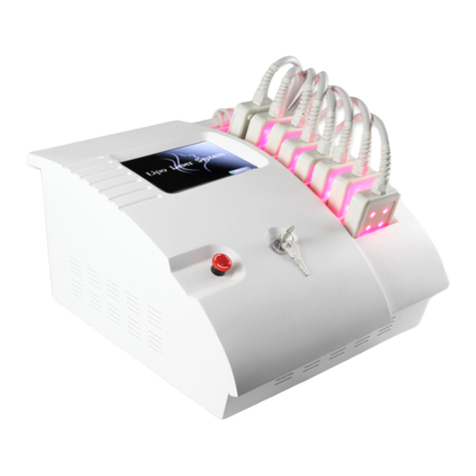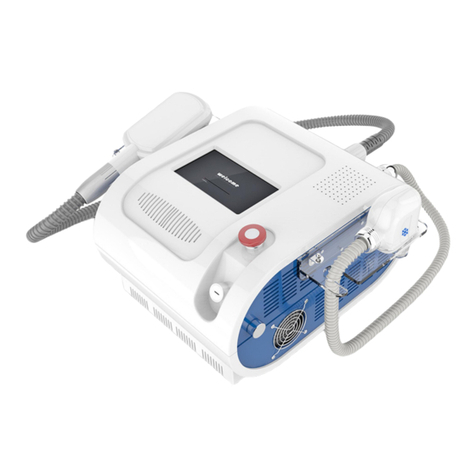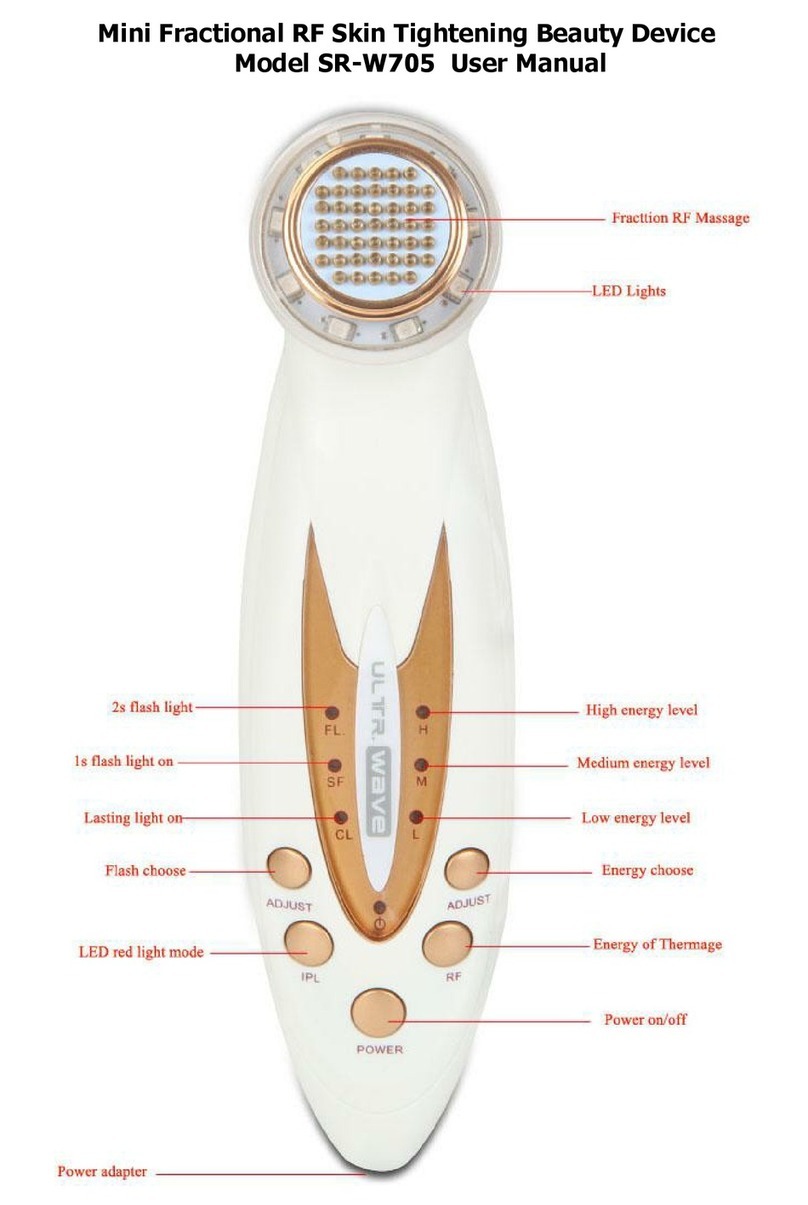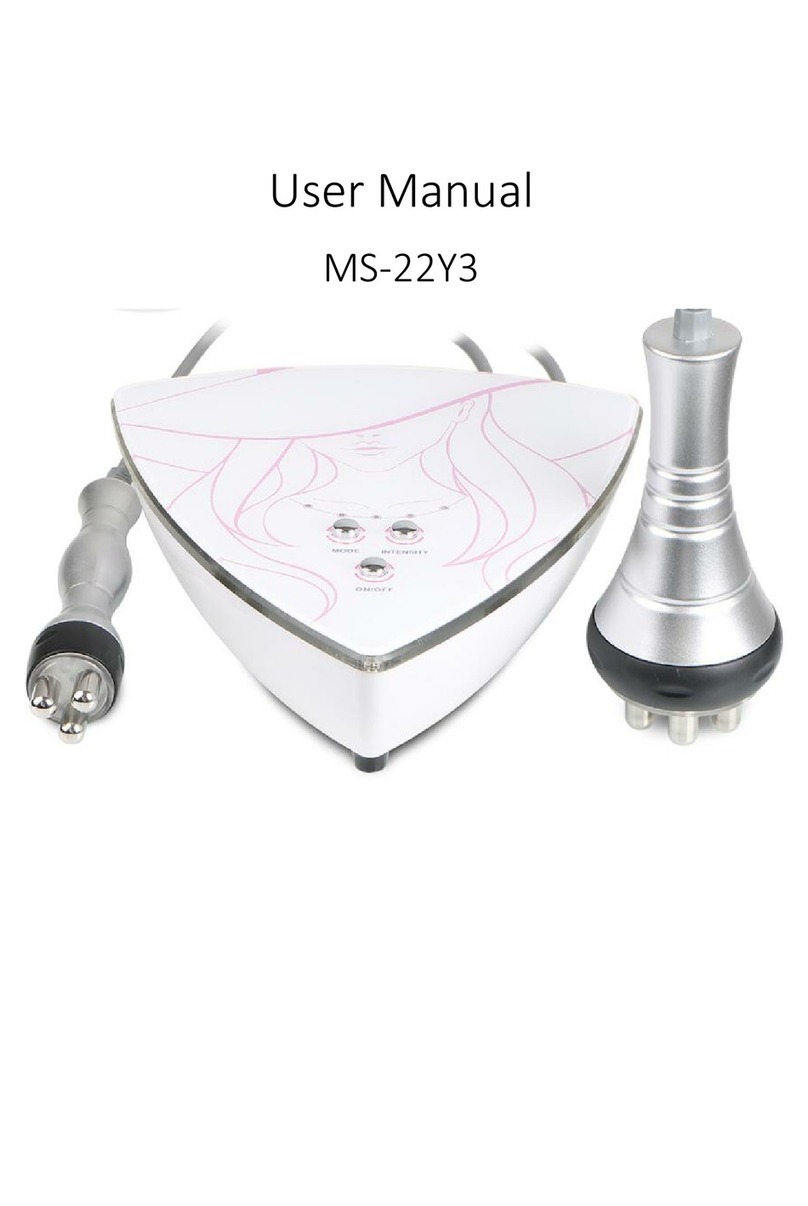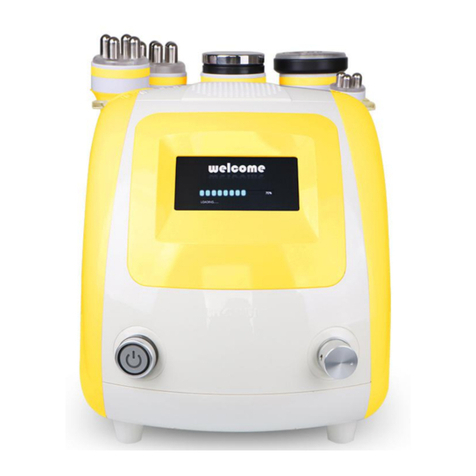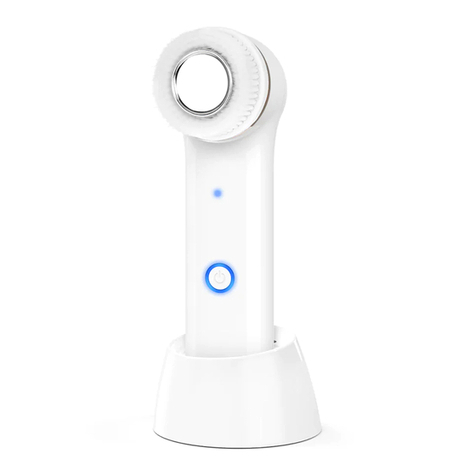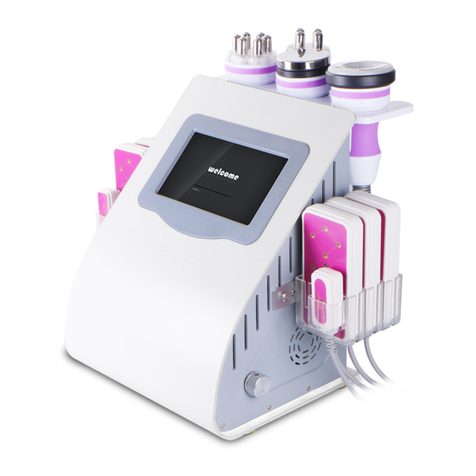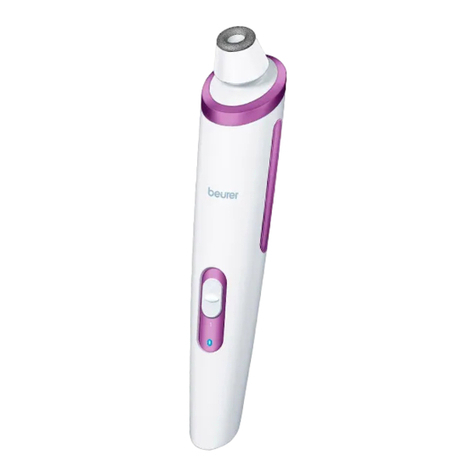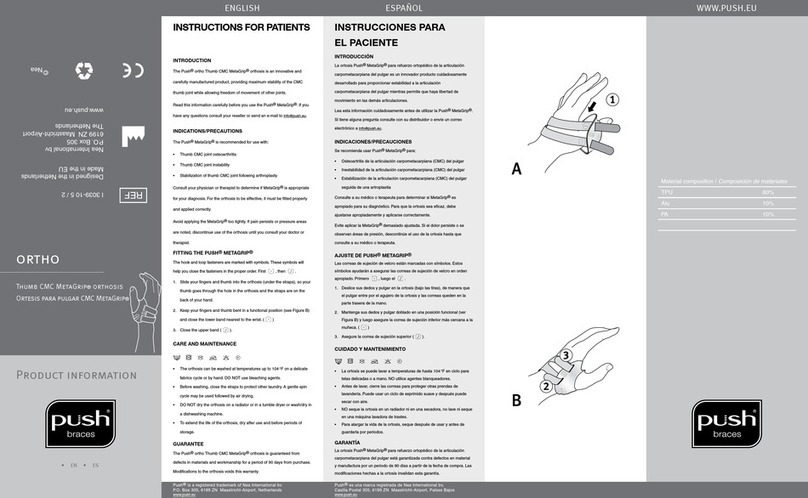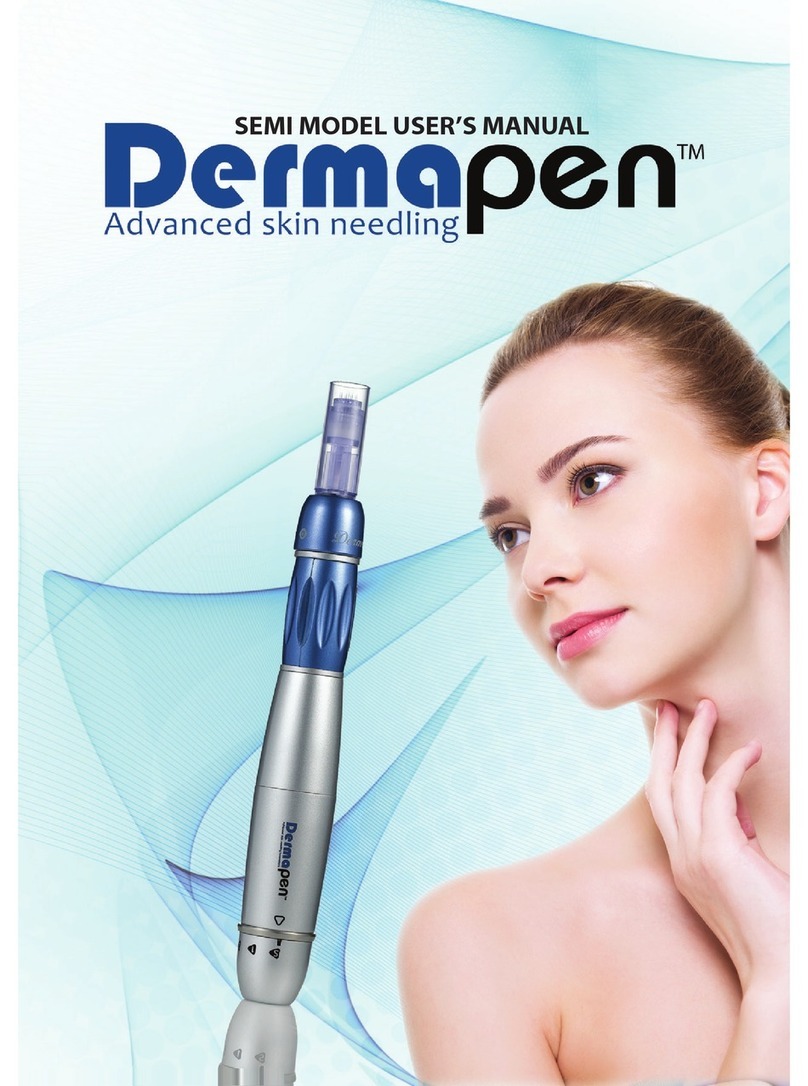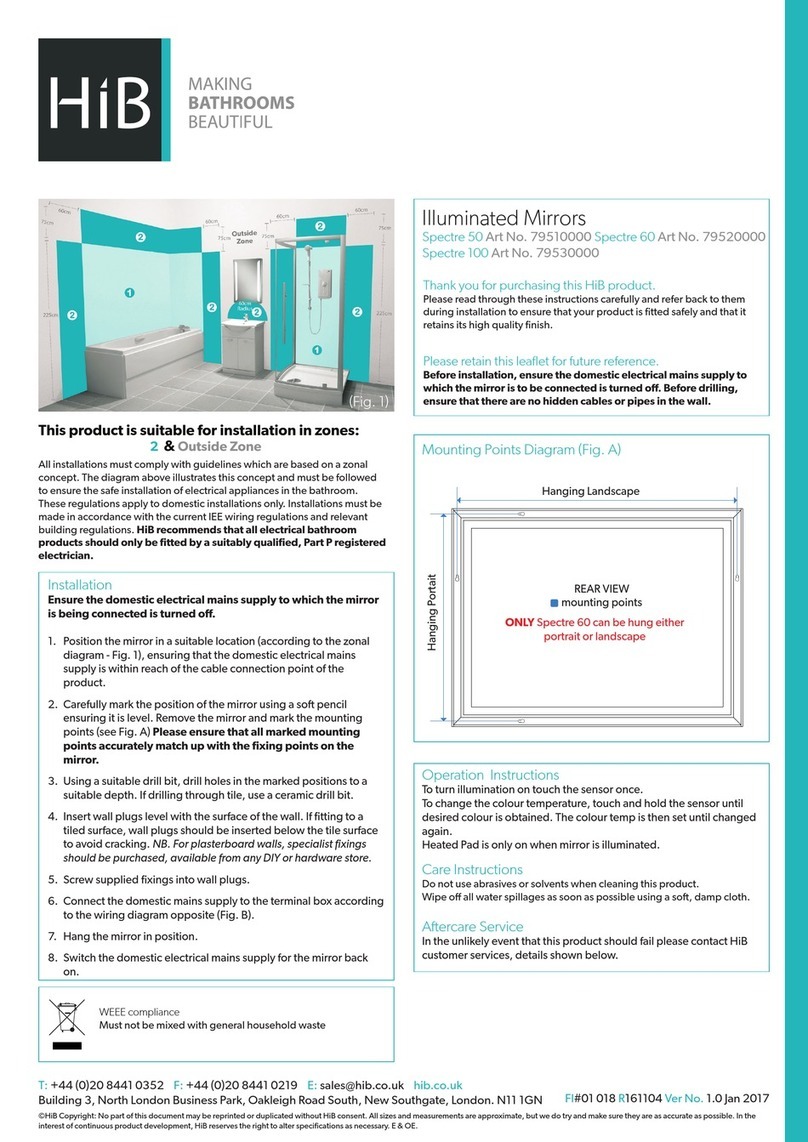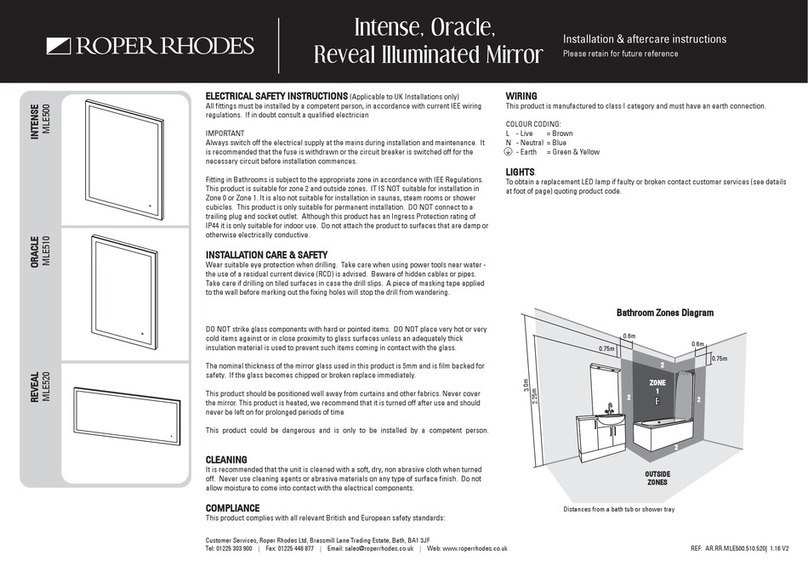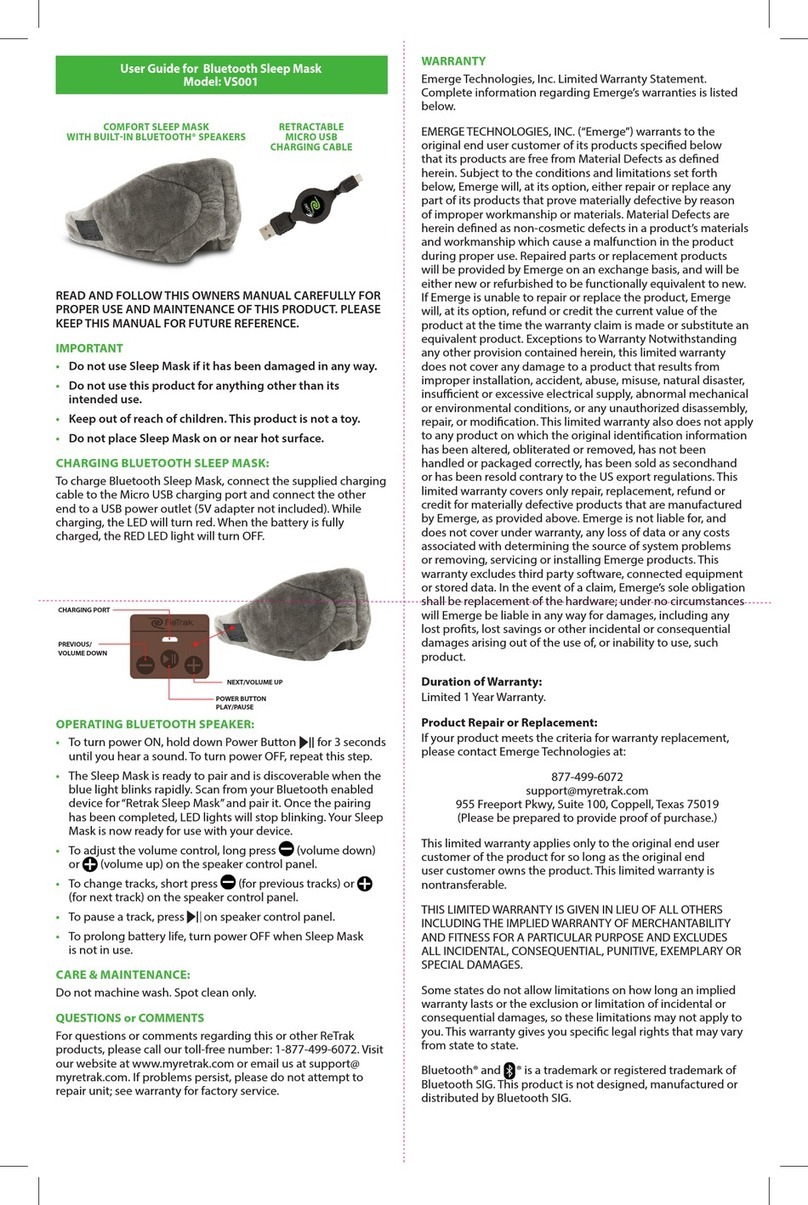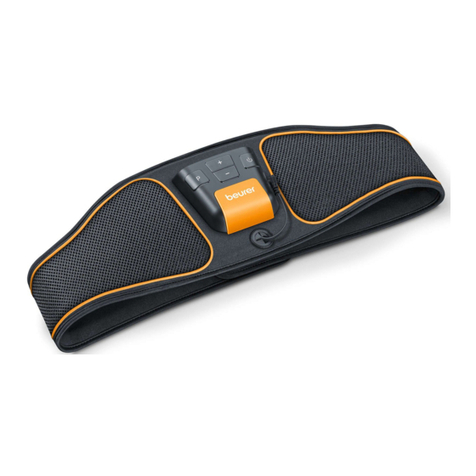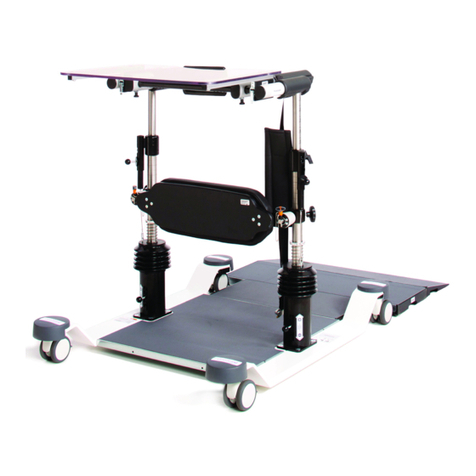
applies to smaller mammary gland.
2.2 Ask about the Medical History
Ask about onset time, menstrual condition, age, birth and nursing history, whether
there is mammary gland pain, the time and nature of the pain, whether it is related to
menstruation, etc.; At the same time observe the size, symmetry, deformity and
redness of the mammary gland surface, and check the nipple for abnormality, the
color and nature of secretions, if any. Palpate the mammary gland next, and check
whether mammary gland for lump, its tenderness, size, quality, mobility and if any
pain is felt.
2.3 Probe Light Source Selection
Each individuals breasts are very different in the size of the mammary gland, thickness,
density, etc., based on which to select light level to prevent light leakage and
insufficient light transmission. Choose stronger lighting for big, thick mammary gland
and weaker light for small, thin mammary gland.
2.4 Light Leakage
The refraction and reflection of light is the source of light leakage, that is, the light
does not pass through the breast. Shooting directly from probe to the periphery
causes the light intensity around mammary gland to increase, and quality affects the
quality of the image. It, on the other hand, weakens the effective light intensity that
can penetrate mammary gland, so we must think of a way to prevent light leakage.
Specific measures include:
(1) Make the inclined surface of the probe close to the skin, and try to use the
softness of the breast to cover the light beam.
(2) Master the regulation of light intensity.
(3) In case of inevitable light leakage, remove the part of light leakage when using the
intake lens, and only take the breast that is fully illuminated.
2.5 Protection of the Probe
The probe is the main part of the instrument, which should be protected. After
checking a patient, the brightness of the probe should be adjusted to a small level and
put back to the original place. After contact with infectious diseases, disinfection
should be carried out to prevent cross-infection.
2.6 Physiological Status of the Examinee
It is necessary to know the physiological stage of the patient in order to accurately
judge whether the breast is a physiological response or a pathological change.
2.7 The mammary gland during lactation is generally not to be examined, because the
light beam cannot pass through the mammary gland containing a large amount of
milk, and the image is completely dark.
2.8 After puncture examination, the mammary gland is gray due to local hemorrhage,
which interferes with the examination results. Therefore, this examination should not
be conducted within two weeks for the mammary gland after puncture examination.
2.9 Generally, the instrument should not be switched on and off frequently. Keep it
clean, dry and be careful when moving.
